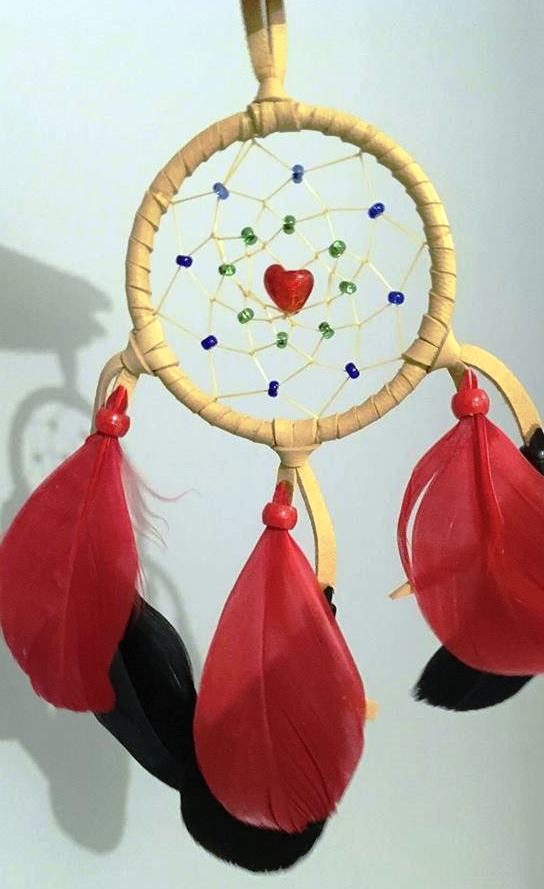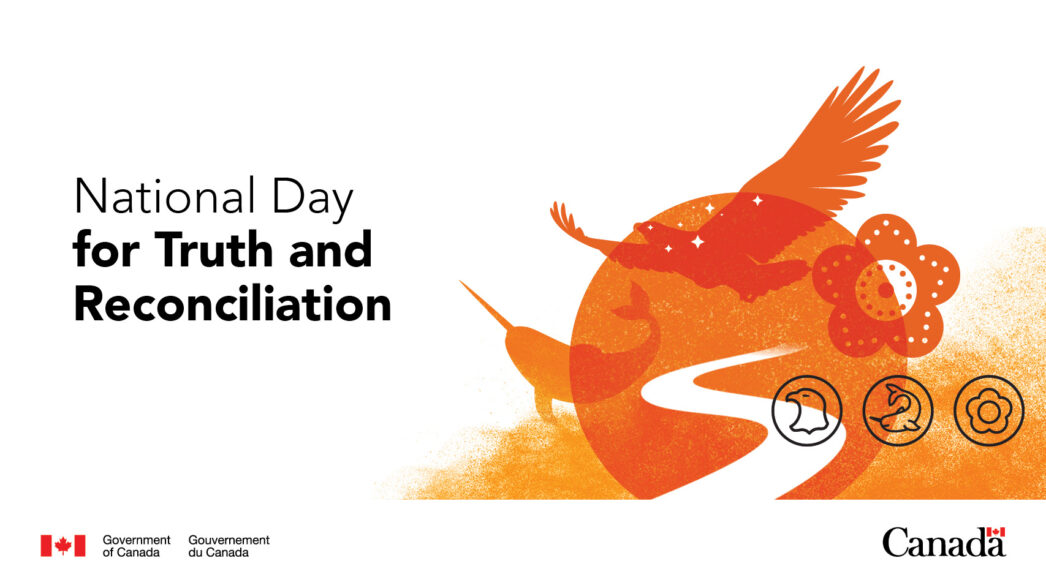Over the past month we’ve been looking at strengths and abilities within the FASD community from different perspectives. You’ve heard from researchers, caregivers, an individual with FASD, and a birth mother. Today we’re sharing the perspectives of community organizations and how they seek to encourage strengths and abilities in the work that they do.
Today is the National Day for Truth and Reconciliation (also known as Orange Shirt Day). In honor of Orange Shirt Day, we wanted to highlight a few Indigenous-led and Indigenous-centered programs across Canada that are working to address FASD and improve the health and wellbeing of their communities by building strengths and abilities.
Feature Programs and Initiatives
Xyólhmettsel Syémyem
Stó:lō Family Empowerment Team
Catherine Finney, Family Empowerment Coordinator
The Family Empowerment Team works in both rural and urban areas to connect clients to community services and programs to help promote wellness. Catherine Finney, the Family Empowerment Coordinator, says, “Sto:lo Service Agency provides a culturally safe space for Indigenous clients to receive services. SSA also promotes a circle of care that allows clients needs to be addressed from a multi-disciplinary approach [that includes] community health, service navigator, primary care, dental, massage therapy.”
Funded by First Nations Health Authority (FNHA), the program mandate is to decrease the incidence of Fetal Alcohol Spectrum Disorder (FASD) in the Indigenous population. Through program statistics, the team can show a correlation between an Indigenous approach, relationship first approach, and modern health tools in the wellness outcomes for clients.
This program is client goal focused and the relationship the client and advocate share is sacred. According to Finney, “the relationship must be based on what the client needs in a verbal/non-verbal communication style that the client can comfortably engage in.”
The program name itself carries a lot of meaning. As Catherine Finney states, “The Stó:lō Elders gifted the program a traditional name in Halq’eméylem (language of S’olh Temexw – traditional territory of the Stó:lō people) Xyólhmettsel Syémyem, meaning I am taking care of my pregnancy . The word Xyólhmettsel indicates a caring and loving relationship and was chosen specifically to reflect the relationship between a caretaker and receiver –the participant and child.”
This program seeks to celebrate and support the success and accomplishments of their clients. The team hosts acknowledgement ceremonies for women. During these ceremonies, “the community, friends, family, and service providers gather in the Longhouse to celebrate women’s accomplishments and honour their spirit and becoming who they are meant to be.”
NB FASD Dream Catcher Service Delivery Model
New Brunswick Centre of Excellence
Written by Annette Cormier
The NB FASD Centre of Excellence Dream Catcher Service Delivery Model was developed and designed with the knowledge

Dream catcher created by 17-year-old to represent the Dream Catcher Model
and wisdom of our Elders and community partners from all 15 First Nation communities in the province of New Brunswick.
This model was created to help decolonize healthcare service delivery, build respectful relationships with the Mi’gmaq, Wəlastəkwewiyik and Passamaquoddy peoples and promote the development of a self-determining healing centered model named “The Dream Catcher.”
This model is inclusive to a person-family centered; strength-based and a continuum of care approach. This holistic model of care places the child, the family, the siblings, at the center of the Dream Catcher, each one as equal of value and importance and surrounded by a community that supports them. When we can web together the right services, at the right time, that meets the immediate needs of the family unit, we provide a solid foundation. Each strand is a success story, a need met, that builds on each other. The Dream Catcher allows the person and the family to feel hopeful and gives them the ability to dream. It shows the interconnectedness that is needed to build a solid foundation.
This model allows us to build on each individual strength, family strengths as well as the strength identified in the community. The elders have reminded us that it takes a village to raise a child and we must take care of each other. People make their living with their strengths, interests, and passion. This is what gives them meaning, value, purpose, and worth and bring a sense of belonging. These are the fundamental basic of life. This is the Dream Catcher. Elder Noel Milliea, once told me that we must go back to the basics of life, well to me this model is the perfect example of that.
When you have a Program or a Model of Care that allows you to do this, well for me this is the strength of the model. This Model has allowed us to merge the western medicine and First Nations science together. Building a trusting relationship by integrating, sharing of knowledge, and building on each other’s strengths. It’s about listening and investing in people, and giving permission to start the healing journey, at the client’s pace.
Circle of Life Program
Kermode Friendship Society
The Circle of Life (COL) team works with women who struggle with substance use and are in their childbearing years, who may or may not be pregnant. COL works with a family for 3 years, whether the family chooses to engage or not, they are welcome to engage with the mentors in that 3-year period. They use cultural activities to connect and explore whether these activities fit into their wellness plan. The program is trauma-informed, harm-reduction focused, and culturally safe.
The Circle of Life team explains:
“We focus on goals that the participant wants to achieve throughout the three-year period. Goals can be changed many times during the 3 years. If a participant wants to get into a craft. we will help them get the supplies they need to start their craft. If we see they are really good at something we look for opportunities for them to show off their abilities/skills.
We celebrate them and their gifts and we use their gifts in a therapeutic way. We had a dad who was trying to stay off the streets and out of trouble. He had a history of violence and theft. He worked with a mentor and found out he was good at making cedar roses. He came to the building almost every day and worked on Cedar roses that we eventually gifted to elders at Christmas. The pride he took in making the roses helped him stay away from his peers who were getting into trouble. He came back a year later to show us his new vehicle he purchased, told us about his new job and thanked us for believing in him.”
The strengths of this program are numerous. The organization focuses on building connections in the community. They go out on the streets and meet people where they are at, without any expectations. They treat everyone as equals and ensure there is a low barrier to entry and they have a welcoming atmosphere. People with lived experience work in the program and use peer to peer support to build each other up at different stages of recovery.
Community Perspectives
We also asked community providers working at these programs about their perspectives and thoughts related to building strengths and abilities in their practice. Here is what they had to say.
Why do you think it is important to celebrate strengths and abilities in your work?
“Each staff, like clients, has strengths and knowledge that contribute to the group. Allowing these strengths and abilities to unfold leads way to uncovering one’s passion and drive. We celebrate strengths and abilities to honor the passion and commitment of the staff and clients so they know they are appreciated and validated.”
-Catherine Finney, Family Empowerment Coordinator, Stó:lō Service Agency
“We tend to focus so much on the challenges that we forget about these strengths. This is what the Dream Catcher shows us, that we need to build on strength, interests, and passions of people. This in return will empower them. When you get to see a child’s eyes light up, a smile, a family being reunited, a community sharing a meal together, or heal a relationship that was once broken, that is what drives us at the Centre of Excellence. That is the reason why we celebrate strengths and abilities.”
-Annette Cormier, NB FASD Centre of Excellence
“We consider ourselves the person’s cheerleaders, we acknowledge every step they take and sometimes we are the only ones who believe in them, even when they don’t believe in themselves. Mainstream society is always focusing on the negatives, so we focus on the positives, even if they are small (i.e. they attempted to go to detox and lasted only a few days). We acknowledge that they at least tried it and now know what to expect if they choose to try it again. [It is important to] undo stereotyping and stigma that society, media, government, and some service providers have ingrained in the participants. [We show] them they are so much more than what society thinks of them.”
-Circle of Life Team, Kermode Friendship Society
What are some common strengths you see within the FASD community?
“I have come to admire the resilience exhibited by clients as they overcome barriers and stigma. Walking along side clients as they determine goals and problem solve for the steps of accomplishing a new goal is very rewarding for both the client and the worker.”
-Catherine Finney, Family Empowerment Coordinator, Stó:lō Service Agency
“I have to say that as challenging as this work might be, one common strength that I see within communities is that people genuinely care and want to help. They all want what’s best for the person with FASD and their families or carers. It’s beautiful to watch communities coming together and sharing resources so that children, youth, and adults living with FASD can be successful.”
-Annette Cormier, NB FASD Centre of Excellence
Learn More
- (Site) New Brunswick FASD Centre of Excellence
- (Site) Xyólhmettsel Syémyem Family Empowerment Team
- (Site) Circle of Life Program, Kermode Friendship Society
- (Resource) Indigenous Approaches to FASD Prevention: Revitalizing Culture and Healing
- (Report) Truth and Reconciliation of Canada: Calls to Action
- (Media Release) Inaugural Claudette Bradshaw FASD Innovation Award to be presented to New Brunswick Team

